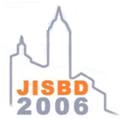
| Presentation |
|
| Call for Participation |
|
| Deadlines |
|
| Commitees |
|
| Previous Editions |
|
| Sponsors |
|
| Local Information |
|
| Program |
|
| Conclusions |
|
|
Workshop of Sitges, 3rd of October of 2006
|
 |
Collocated to XI Jornadas de Ingeniería del Software y Bases de Datos
Presentation
The Aspect Oriented Software Development (AOSD) is a promising discipline that can be considered as one of the most suitable alternatives to promote software evolution and to improve the software development process of currently complex systems. Originally, this new discipline focused on implementation issues, known as Aspect Oriented Programming (AOP). In a fashion similar to structured- and object-orientation, aspect-orientation is following a cycle of natural progression from programming to other software development stages. Currently, AOSD aims at promoting the use of aspects throughout all activities of the software life cycle. The general aim of AOSD is to propose a seamless software development process where crosscutting concerns are the main drivers of the development, from requirement engineering through to implementation.
The aspect-oriented technologies extend traditional techniques such as object-orientation, allowing developers to encapsulate in separate modules those properties that normally crosscut several components of a system and are known as aspects. Examples of such crosscutting concerns are global properties of a system, such as synchronisation, coordination, distribution and persistence. The aim of AOSD is to address crosscutting concerns by providing means for their systematic identification, separation, representation and composition. The main benefit of AOSD is that it improves system modularisation, by reducing scattered and tangled code, avoiding the typical mixing between functional and extra-functional properties, enabling a better code evolution management.
Aspect-orientation is an emerging technology and therefore there are still main open issues to be discussed and solved. For example, we still need notations and languages suitable to express crosscutting concerns at the different levels of abstraction of the software development life cycle and middleware (or distributed) platforms providing composition mechanisms that can allow us to statically and dynamically compose aspects to other implementation modules.
There has been a growing interest in using Aspect-Oriented Software Development technologies as a means to facilitate software maintenance and promote software evolution. For these reasons, we believe that the Spanish, Portuguese and Latin-American communities can benefit from a forum to discuss open issues in the area, exchange research results and explore joint possible solutions.
Topics of interest
Specific topics of interest for the workshop include, but are not limited to:
- Aspect-Oriented Requirement Engineering
- Aspect-Oriented Analysis and Design.
- Aspect-Oriented Software Architectures.
- Traceability of aspects throughout all phases of the software life cycle.
- Aspect and other separation of concerns mechanism, such as viewpoints, goals and problem frames.
- Integration of components with aspects.
- Mechanisms, rules and languages for composition.Aspect-Oriented databases.
- Reverse Engineering and aspect-orientation.
- Experiences in developing aspect-oriented applications.
- Trazability: from requirements to code.
- Tools supporting the different phases of the aspect-oriented software development.
- UML 2.0 and its application for aspect modeling
in different phases of the software life-cycle.